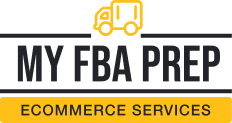
Why Every DTC Store Should Have an SEO Strategy (and How to Do It)

Search engine optimization (SEO) is an advertising asset. It’s one of the most coveted acquisition channels, with the power to boost brand visibility and bring thousands more qualified leads to your site — all at a lower price tag than many other marketing strategies.
For your DTC store, SEO is paramount. Here’s a crash course on why it’s important and how to begin incorporating it into your marketing efforts.
Why your DTC brand needs SEO
By introducing SEO into your brand promotion, you’ll see wide-reaching results that contribute to a higher conversion rate, like:
- Ongoing organic traffic: Unlike ads that require you to cough up money regularly to keep generating traffic, SEO works in the background and continuously brings in visitors well after you publish content.
- Greater brand visibility: Effective SEO translates into higher rankings on Google’s search result pages. This means more Google users will be able to find you when they search for products or services like yours.
- Higher-quality leads: By targeting the right keywords and phrases, you draw in and engage browsers with a clear need for your products. Your content can further nurture leads by demonstrating your industry expertise and winning their trust.
How to get started with SEO in 6 steps
With its benefits clearly outlined, we’ll explain the initial steps you need to take to begin leveraging the power of SEO.
1) Understand core principles
Before you jump into creating content, realize that SEO isn’t a “set it and forget it” strategy. Search engines like Google constantly update their algorithms to better predict user intent and return the most relevant results for queries, so you must remain vigilant.
To keep up with these adjustments, you’ll have to evaluate your SEO performance regularly and analyze various elements, including:
- On-page SEO: This encompasses components like your keyword, alt text, meta description, and meta title. Google crawls these to determine the purpose of your page.
- Off-page SEO: This includes (but isn’t limited to) backlinks, social shares, and other signals Google monitors outside of your site. They serve as proof that other sites and people find your content reliable.
- Technical SEO: This involves page speed, mobile friendliness, and other factors that help search engines access and interpret your page.
You’ll have to make room within your strategy to strengthen each of these elements and maximize your chances of ranking.
2) Define your target audience
A strong SEO strategy starts with a clear understanding of who you want to engage. That serves as the basis for any keywords and blog topics you decide to include.
For instance, say you sell beauty supplies. You could create content for a range of audiences, including teenagers, adults, and professional makeup artists. What you cover and how will vary drastically depending on the market segment you choose. The more specific you are when defining your audience, the better.
Once you hone in on your targets, you can more accurately anticipate their questions and pain points and address them in your content so you appeal to the needs of your readers.
3) Audit your site
Google appreciates a site with a positive user experience. From fast load times to logical site architecture, the search engine will check that your site is easy to navigate and doesn’t cause “pogo sticking” behaviors (e.g., high bounce rates).
To boost your chances of ranking, your site has to load seamlessly, work well on mobile devices, have no broken links, and check off other vital boxes. Great content will only take you so far; you also need optimal site performance to avoid down-ranking.
4) Select your keywords
In years past, businesses could repeatedly use the same keyword in their content and see results. Nowadays, this tactic is called “keyword stuffing,” and fixating on one search term can actually weaken your visibility.
While specific words are important, you should also include long-tail and related keywords in your blog. Google now uses natural language processing (NLP) to identify semantically related words and distinguish high-quality content from shallow, inferior postings. By employing natural language, you can clearly demonstrate your expertise in the field.
Pay attention to search intent as well. Just because someone searches for “running” doesn’t mean they’re looking to buy a new pair of shoes. They might instead be researching tips on how to train for a marathon or looking for a song called “Runnin,” so be careful to avoid assumptions. Take the time to Google your keyword and see what appears first on the page. Do the top results relate to your brand and/or products?
5) Create content consistently
Creating content is critical, but keeping up the publication cycle is equally important. It’s easy to lose steam after several months of weekly blogging, so you should establish a publishing schedule early on that you can commit to. Don’t force yourself to churn out 10 blog posts a week. Instead, commit to a realistic writing cadence, or hire a freelancer to help you produce fresh content regularly.
SEO content also includes your product pages and product descriptions. So, writing unique content, full pages, adding FAQs, and adding keywords and valuable information will help your product pages rank. That means you need to develop a strategy in place to create consistently high-quality product pages that perform well in search.
Tip: Focus on evergreen content if you’re a smaller team (i.e., write about topics that have a long shelf life, like how-tos). You’d also benefit from establishing topic clusters or several umbrella topics you regularly write about and produce sub-articles from that you can then interlink.
Additionally, set aside time to refresh old pieces and actively promote your content to grab as many eyes as possible.
6) Optimize for Amazon (and other marketplaces)
Search doesn’t begin and end with Google. In fact, 61% of consumers report starting product searches on Amazon, versus 49% who do so on a search engine like Google. Further, when people browse on Amazon, you know they’re looking for a product and so are farther down the sales funnel. To capitalize on the search intent, you need to pay attention to the A9 algorithm and how you optimize for it.
That also holds true for other marketplaces like Walmart so, if you neglect on-page optimization, you’re almost certain to lose sales. Additionally, your page refinements on Walmart and Amazon will often rank in Google as well. When refining your pages, pay attention to:
- On-page elements: Your product title, bullet points, descriptions, A+ Content, and other text-based elements should include your relevant keywords. Also, upload images and describe them in the alt text using appropriate keywords. Reviews help you rank as well, so rich and detailed product pages with all the information customers need to make a purchase decision are key.
- Back-end SEO: Set back-end keywords that let Amazon know exactly which keywords your product should rank for. To do so, go to Seller Central –> Inventory –> Manage Inventory –> Specific Listing –> Edit –> Keywords –> Search Terms.
- Technical SEO: Amazon incorporates other factors into rankings like sales velocity, conversion rate, and product price. So, you’ll have to keep an eye on the details and sometimes pay to run sponsored products. You’ll also have to keep products in stock, or your Amazon ranking will drop.
Be aware, Amazon SEO mirrors but isn’t identical to SEO for Google. Therefore, you’ll have to make some Amazon-specific adjustments and integrate your Amazon pages into your overall SEO strategy.
Wrapping up — Leverage the power of SEO
Few promotional channels can measure up to the long-lasting, cost-effective value of SEO. When honed well, it can greatly boost your products’ visibility in search results and draw more traffic to your online store.
However, this strategy requires you to narrow down your market segment, refine your website for smooth functionality, regularly pump out quality content, and optimize for your digital marketplace. Start leveraging SEO now so you can reap both its immediate benefits and long-term profits.
